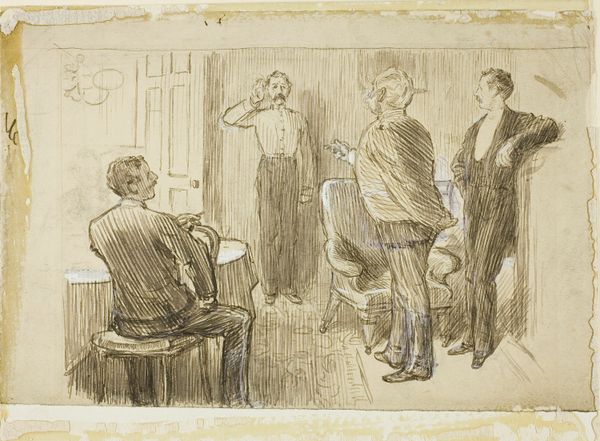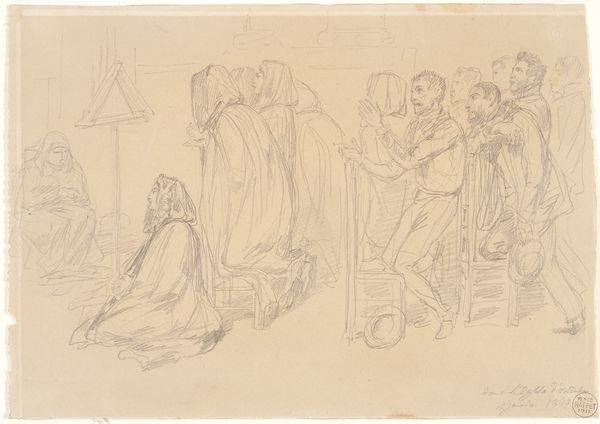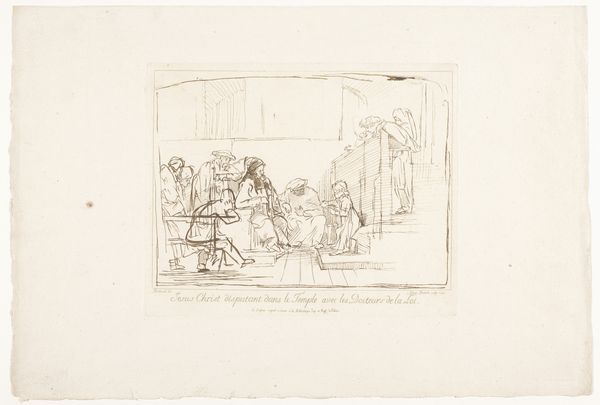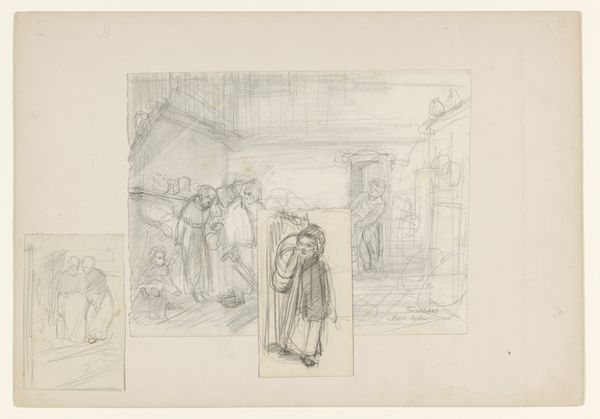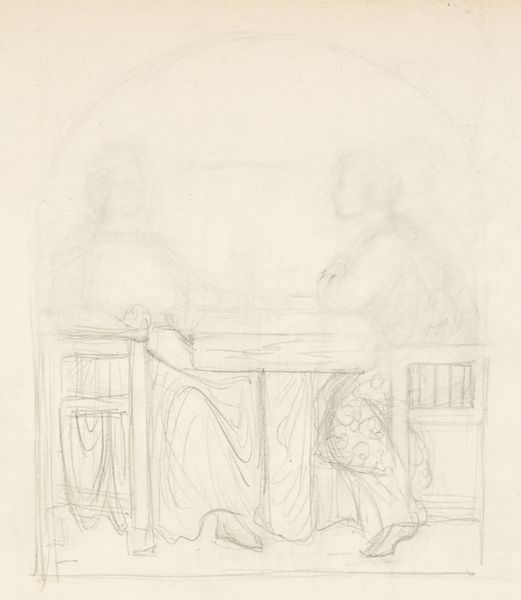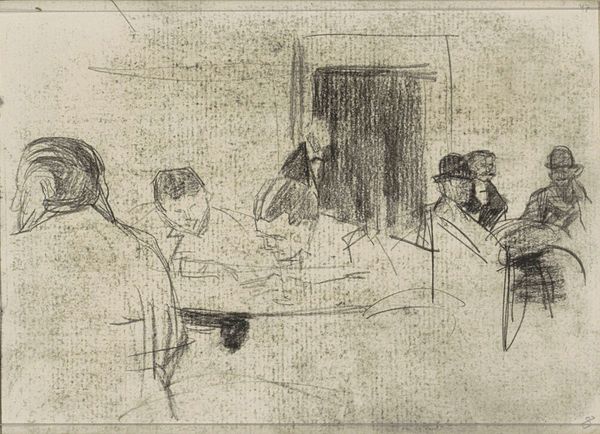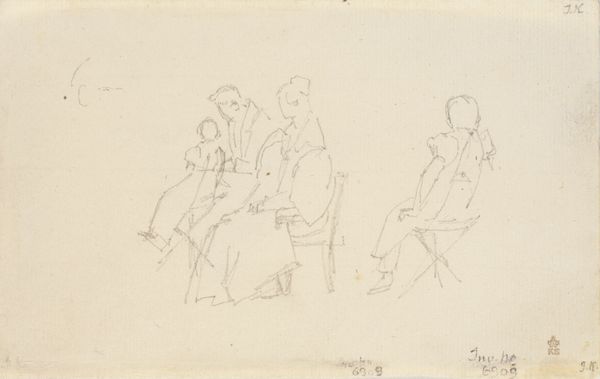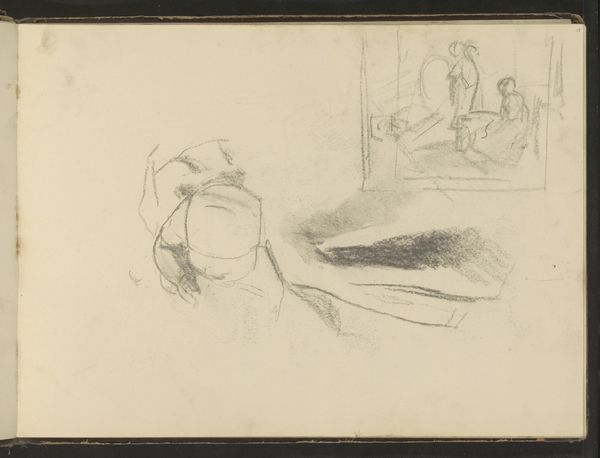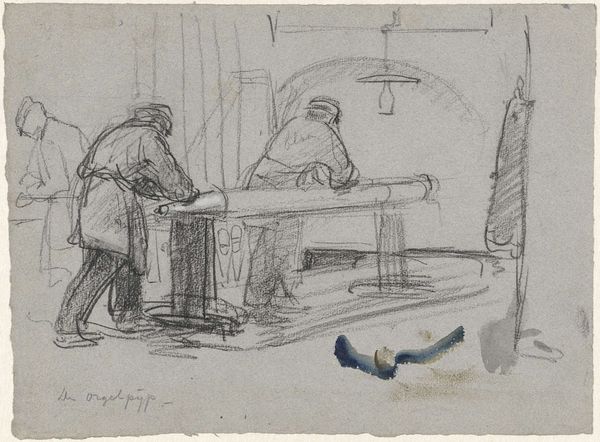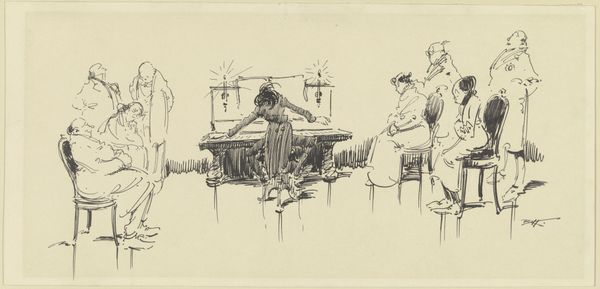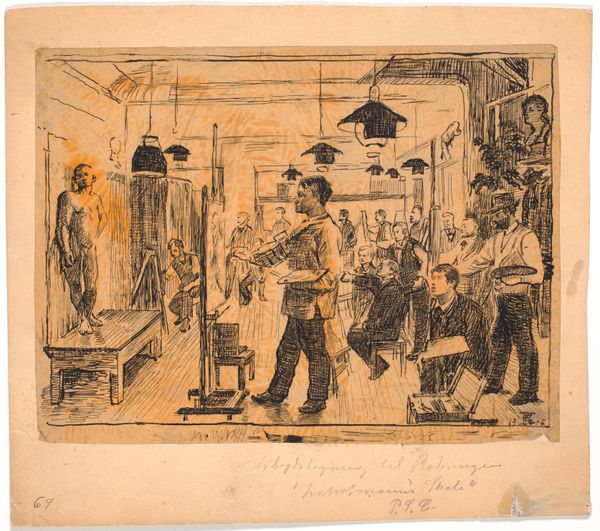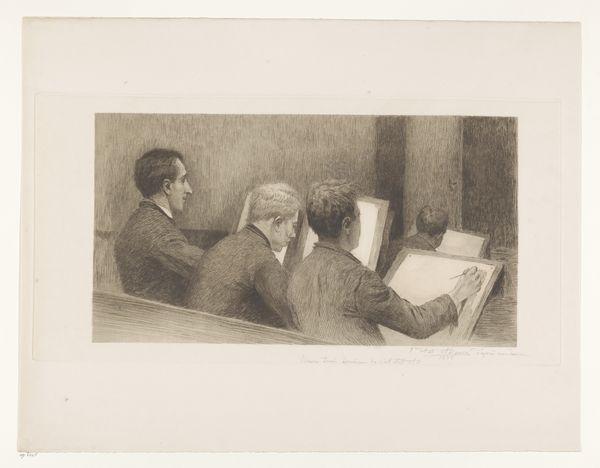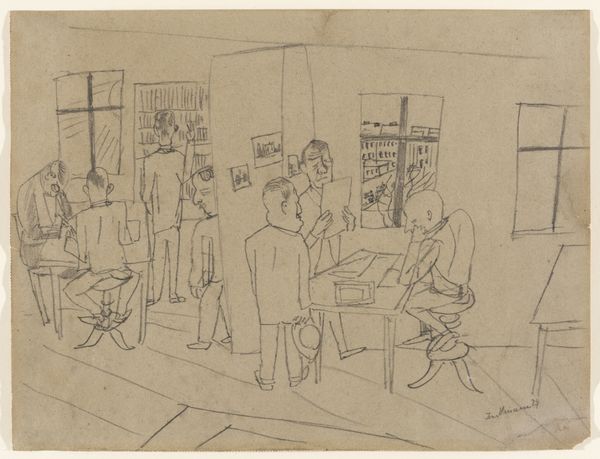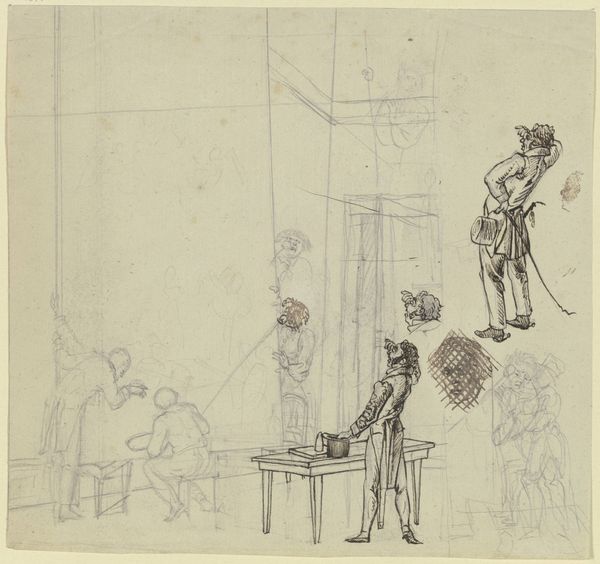
Dimensions: 15 3/8 x 22 3/4 in. (39.1 x 57.8 cm)
Copyright: Public Domain
Curator: What a tender, almost dreamlike scene. Looking at Boccioni's Study for "Homage to Mother," created around 1907, you feel immediately drawn to the intimacy within these sketched panels. Editor: Yes, there’s a quietude, a feeling of being in observation. It feels very personal. Each vignette presents the subject, potentially Boccioni's mother, within enclosed domestic scenes. What social structures inform the emotional texture we find within the family, in Boccioni's Italy? Curator: Exactly, considering Boccioni’s Futurism is crucial, especially given Futurism’s complex and often contradictory relationship to women and the domestic space. This drawing, housed at the Met, predates his full embrace of Futurism, yet we can see his move toward simplifying forms and emphasizing modern life's experiences. Note the composition into three distinct spaces that might signal temporality and movement - typical Futurist concerns. Editor: Indeed, although these distinct spaces are unified with common forms that do not clearly distinguish subject from context. Considering its historical moment, the pre-war period, do we see the dawn of those futurist ideas starting to take hold in the way that labor is displayed or the way that community is presented? Boccioni clearly isolates and confines these feminine roles into enclosed, controlled areas. Curator: He uses light masterfully, and it influences how we, as viewers, engage in what you termed labor: note the person bent over a book or those gathered together sewing. Editor: Which can speak directly to the politics of labour and class distinctions. Who is given the leisure for academic study and who performs manual labor? And how does gender inform those divides? Even without color, the textures he suggests make this question linger with its stark lines. Curator: And it lingers perhaps because he isn't fully committed, because this is still a study. But perhaps that very quality allows us to examine the layers you uncover here without being overshadowed by his later ideological declarations. Editor: Yes, it functions almost as a palimpsest of nascent ideas around gender and modernity and community. Curator: A generous invitation into those ever present, very powerful themes in life and in art. Editor: An insight that resonates as much today as it did then, if not more.
Comments
No comments
Be the first to comment and join the conversation on the ultimate creative platform.
